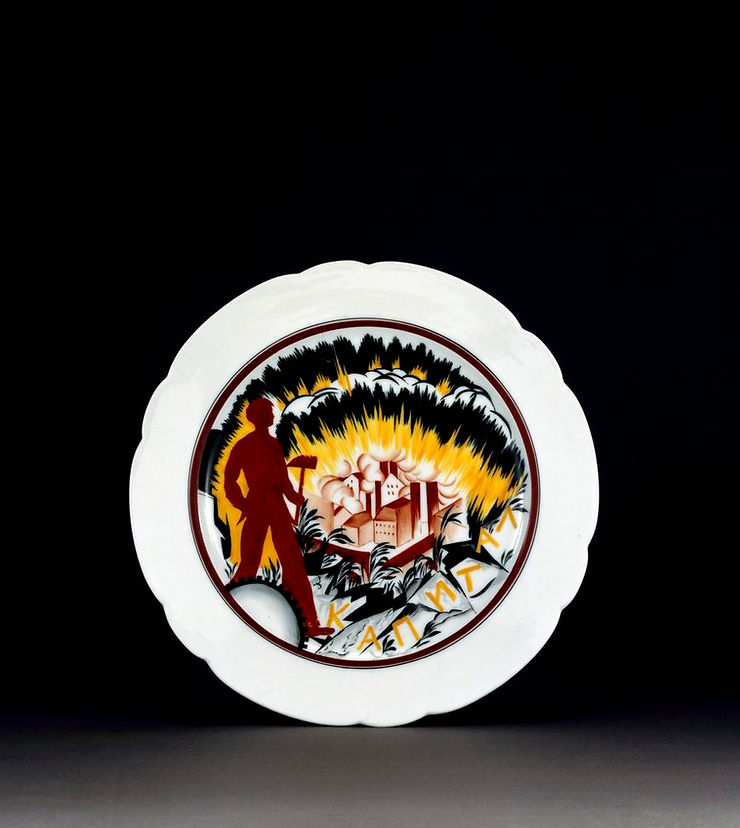By: Emma Lu
When old ideologies, such as imperialism, are violently dismantled, the culture must change as well. Crockery once intended for the lavish lifestyles of the Romanovs was transformed into a new, more forward-thinking kind of propaganda.
The State Porcelain Manufactory, under the Bolsheviks, took on a new meaning as a tool of new artistic innovation and propaganda. The old hallmarks were scratched out, and replaced with a cog, a sickle, and a hammer. This motif would be found throughout the porcelain produced at the factory. At the heart of Lenin’s ideology, was the hope of increasing productivity, and these designs were intended to do just that. They were to spread the beliefs that the working man was important and necessary for the world to keep running.
Did his plan work? Not necessarily in the world of propaganda. Instead, they were more experimental, as some of the most visionary artists of the time were hired. Their pieces were more exploratory than functional, as some porcelain sets only ever sat in galleries. These creations were far from commercial, as they were too rare and one of a kind.
However, the requirement that art is educational had started to take its toll on artistic innovation. If someone wasn’t part of the union, they’d be seen as a parasite and sent to a camp. As times changed, it became more and more important to blend in with the crowd. That is why the vision of propaganda on porcelain ultimately failed, yet it still marks an important phenomenon.
It is unique when such exploration and innovation happens in the world of art. Standards are very rigid, only broken by the people who decide not to conform. Maybe the intentions weren’t great, but what came out was new, modern art the world had never seen before.
Article: https://s3.amazonaws.com/appforest_uf/f1656880002532x416782483752314900/How%20teapots%20were%20used%20to%20spread%20Russian%20propaganda%20-%20BBC%20Culture.pdf











